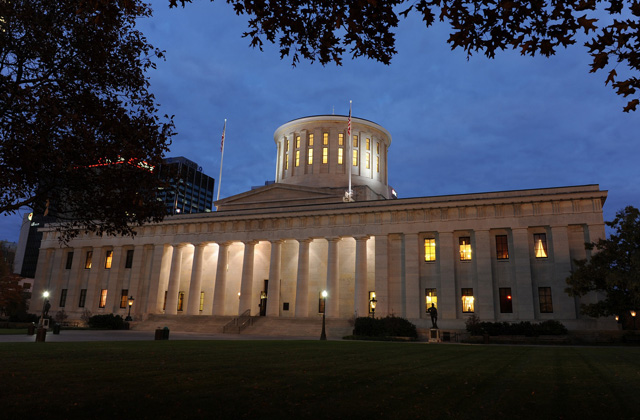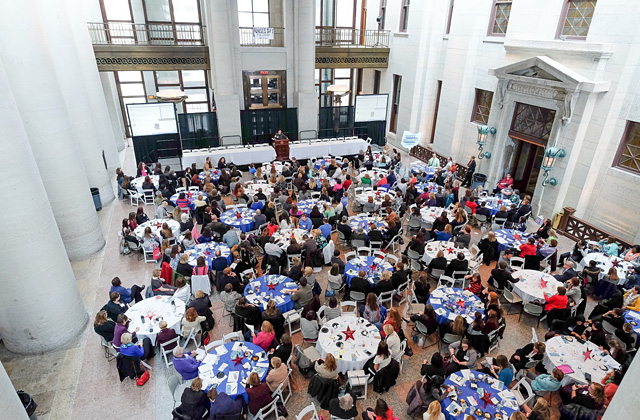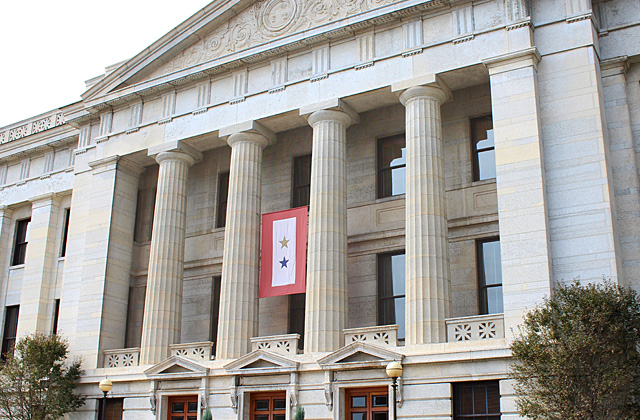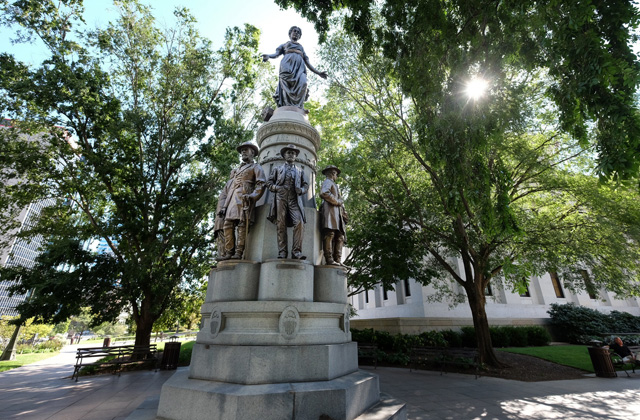About
Visit
Museum
Photos
Video
News
Events
Halloween Day tours for kids and for adults!
October 31 - Trick or Treat and Spooky tours



"Ohio Holocaust And Liberators Memorial"
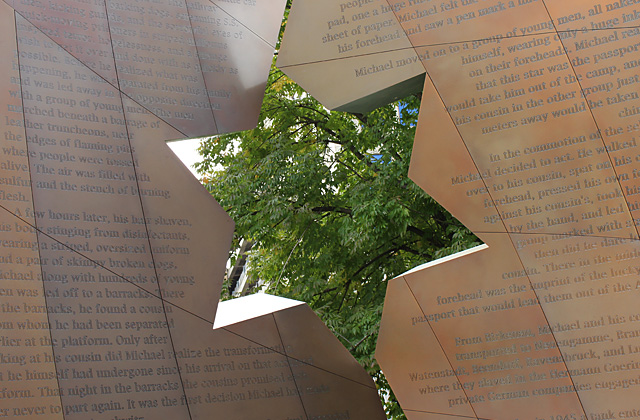 The Ohio Holocaust and Liberators Memorial was unveiled by Governor John Kasich and architect Daniel Libeskind during a ceremony held at the Ohio Theater and the South Plaza of the Ohio Statehouse Monday, June 2, 2014.
The Ohio Holocaust and Liberators Memorial was unveiled by Governor John Kasich and architect Daniel Libeskind during a ceremony held at the Ohio Theater and the South Plaza of the Ohio Statehouse Monday, June 2, 2014. The ceremony was the conclusion of a three year process that began May 4, 2011 when Governor Kasich proposed a memorial to remember Ohio Holocaust survivors and Ohio World War II veterans who liberated thousands from Nazi death camps in the spring of 1945. In March 2012, Governor Kasich signed legislation authorizing the creation of the memorial with oversight of the project being given to the Capitol Square Review and Advisory Board (CSRAB) and the Ohio Arts Council (OAC).
The Ohio Holocaust and Liberators Memorial at the Ohio Statehouse represents humanity at its most destructive and its most compassionate. The memorial speaks for the millions of voices the Holocaust silenced and thanks the brave men and women of Ohio who liberated the oppressed and fought for human freedom during the Second World War.
Memorial Facts
Designer: Daniel Libeskind, Studio Daniel LibeskindGeneral Contractor: Turner Construction and Zahner Co.
Steel/Bronze: Zahner Co.
• 4 tons of steel (standard A36K);
• 3.5 tons of bronze
Stone: Cleveland Marble & Mosaic Co.
• 11 tons of limestone
• 13.7 tons of granite
Building Area: 1,029 square feet
Total Budget: $2.145 million
Starting Date: November 6, 2013
Dedicated: June 2, 2014
Memorial Text
THE FOLLOWING IS INSCRIBED ON THE TOP OF THE STONE WALL:IN REMEMBRANCE OF THE SIX MILLION JEWS WHO PERISHED IN THE HOLOCAUST AND MILLIONS MORE INCLUDING PRISONERS OF WAR, ETHNIC AND RELIGIOUS MINORITIES, FREEMASONS, HOMOSEXUALS, THE MENTALLY ILL, DEVELOPMENTALLY DISABLED, AND POLITICAL DISSIDENTS WHO SUFFERED UNDER NAZI GERMANY
THE FOLLOWING IS INSCRIBED ON THE FRONT OF THE STONE WALL:
INSPIRED BY THE OHIO SOLDIERS WHO WERE PART OF THE AMERICAN LIBERATION AND SURVIVORS WHO MADE OHIO THEIR HOME IF YOU SAVE ONE LIFE, IT IS AS IF YOU SAVED THE WORLD
"Every human being who chooses to remember this chapter of history and to infuse it with meaning is thereby choosing to struggle for the preservation of the bedrock moral values that alone make possible the existence of a well-ordered society. This is a commitment to uphold human rights, above all, freedom and the sanctity of life, and the opportunity for people to live side by side in harmony. - Avner Shalev
THE FOLLOWING IS INSCRIBED ON THE FRONT OF THE BRONZE MONUMENT:
STARS
Michael Schwartz arrived in Auschwitz-Birkenau in August of 1944 with one of the last transports from the Lodz ghetto. Though a veteran of this first and last ghetto of Nazi Europe, Michael was in a state of shock when he was shoved out of the cattle car into the Auschwitz kingdom. The railway platform with its barking dogs, screaming S.S. men, kicking guards, and the sorrowful eyes of quick-moving prisoners in striped uniforms inspired terror, hopelessness, and a strange wish to get it over and done with as quickly as possible. Before he realized what was happening, he was separated from his family and was led away in the opposite direction with a group of young men. The men marched beneath a barrage of leather truncheons, near the edges of flaming pits where people were tossed alive. The air was filled with sulfur and the stench of burning flesh.
A few hours later, his hair shaven, his body stinging from disinfectants, wearing a striped, oversized uniform and a pair of skimpy broken clogs, Michael along with hundreds of young men was led off to a barracks. There in the barracks, he found a cousin from whom he had been separated earlier at the platform. Only after looking at his cousin did Michael realize the transformation that he himself had undergone since his arrival on that accursed platform. That night in the barracks the cousins promised each other never to part again. It was the first decision Michael had made since his arrival in Auschwitz. Michael quickly learned the realities of Auschwitz. Survival depended on one's ability to "organize" anything and everything, from an additional sip of coffee to a better sleeping place on the three-tiered wooden planks, and of course one had to present a healthy and useful appearance if one hoped to pass selections.
One day rumors spread in Michael's barracks that the impending selection was of particular importance, for those selected would be transferred out of Auschwitz to work at another camp. Michael was especially anxious to pass that selection. In the few months he had been in Auschwitz he had learned that Auschwitz would eventually devour everybody, even those who deciphered its survival code. The moment came. Michael and his cousin stood in front of Mengele, whose clean, shaven face glittered in the sun and whose eyes shone. The angel of death was in his moment of bliss. Michael's turn came and Mengele's finger pointed: "Right!" Then Michael heard Mengele's death sentence on his cousin: "Left!"
A moment later Michael stood before a table where three people sat dressed in white coats. One was holding a stamp pad, one a huge rubber stamp, and the third a pen and a white sheet of paper. Michael felt the cold rubber stamp press against his forehead and saw a pen mark a line on the white sheet of paper.
Michael moved onto a group of young men, all naked like himself, wearing only a huge ink star on their foreheads. Michael realized that this star was the passport that would take him out of the camp, and that his cousin in the other group just a few meters away would be taken to the chimneys. In the commotion of the selection Michael decided to act. He walked briskly over to his cousin, spat on his cousin's forehead, pressed his own forehead against his cousin's, took his cousin by the hand, and led him to the group marked with stars. Only then did he dare look at his cousin. There in the middle of his forehead was the imprint of the lucky star, the passport that would lead them out of the Auschwitz hell.
From Birkenau, Michael and his cousin were transported to Neuengamme, Braunschweig, Watenstadt, Beendorf, Ravensbruck, and Ludwigslust, where they slaved in the Hermann Goering works in private German companies engaged in the war industry.
On a May day in 1945 a tank entered a camp near Ludwigslust. On it was painted a huge white star and inside the tank sat a black-faced soldier wearing a steel helmet. After six years in the Nazi slave kingdom, Michael and his cousin were once again free men.
Based on interview by Ellen Blakfein with Michael Schwartz, March 31, 1979. Eliach, Yaffa. "Hasidic Tales of the Holocaust" pp. 130-132. Oxford University Press, 1982.
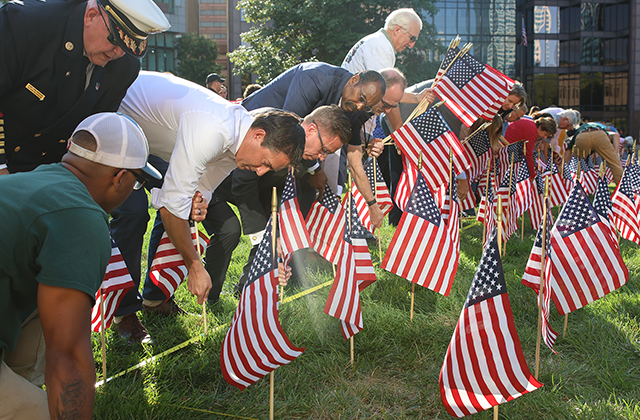 Flags for 9-11 in 2025
Flags for 9-11 in 2025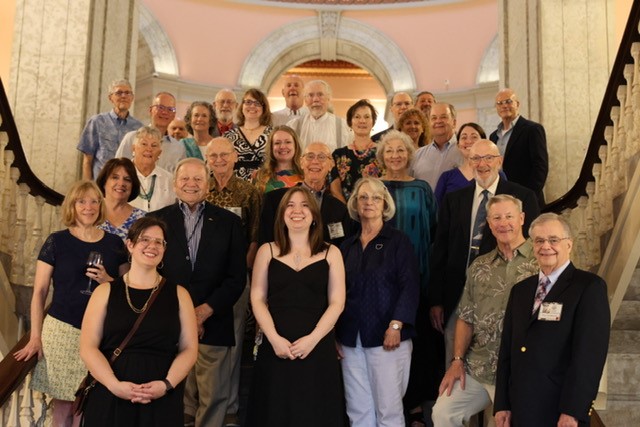 2025 Volunteer Appreciation Dinner
2025 Volunteer Appreciation Dinner America 250-Ohio
America 250-Ohio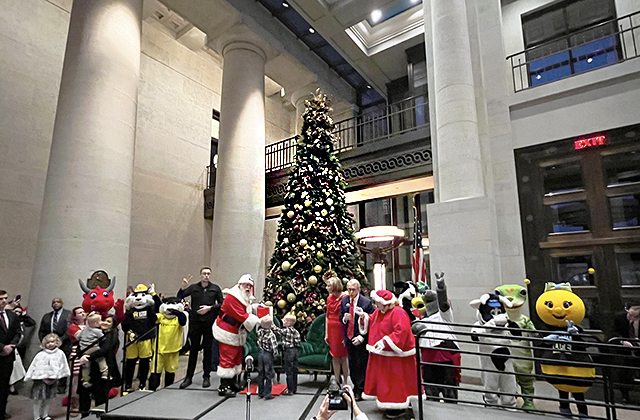 Holiday Festival and Tree Lighting 2024
Holiday Festival and Tree Lighting 2024 Holiday Santa Photos 2024
Holiday Santa Photos 2024 2024-11-03 Olympic and Paralympic Celebration
2024-11-03 Olympic and Paralympic Celebration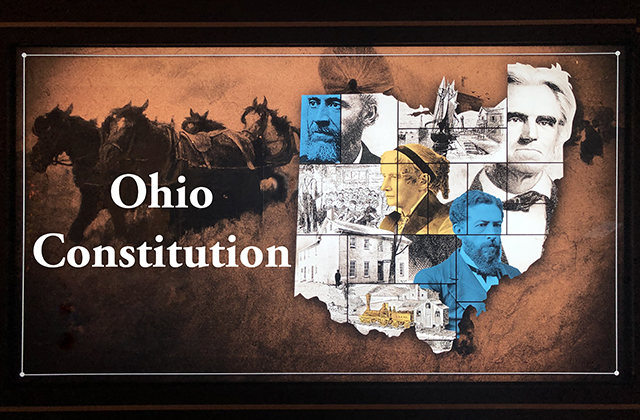 Ohio Constitution Videos
Ohio Constitution Videos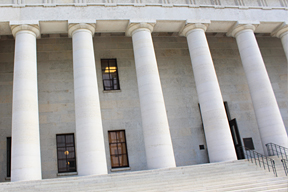 Ohio Statehouse Videos
Ohio Statehouse Videos







